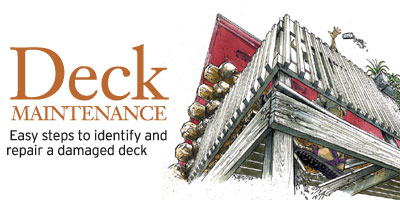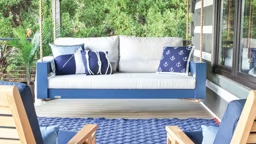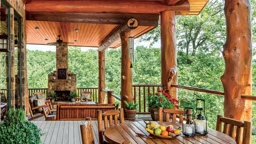
Decks form the transition between indoor and outdoor log home living. Wooden deck components exposed to extreme sun, rain or cold are especially vulnerable to weathering and decay. Regular inspection and some basic maintenance will help you get the most out of your deck and can prevent costly repair bills.
Problem Area: Look for areas of darkened or soft wood around fasteners, loose rails and posts, and slick or slimy wood surfaces. Also inspect the space between the ledger and the house, or the rim joist or band board to which the ledger attaches.
Solution: Probe wood near fasteners and the band board with an awl or nail. If the awl plunges into wood easily, the wood has begun to rot and needs to be replaced or repaired.
Problem Area: You see discoloration of the ledger or decking where it meets the house.
Solution: You may want to install flashing to divert water away from the house and protect the deck-house connection from moisture damage. An L-shaped piece of metal with the upright stem of the L caulked to the log wall and the foot of the L laying on the decking and extending out from the house will divert water away from the house and protect the deck-house connection from moisture damage.
Problem Area: Examine railing connections carefully.
Solution: Probe suspicious balusters and posts. If you find decay, you may need to replace the piece.
Problem Area: Inspect stairs and stair connections, especially the ends of stair stringers.
Solution: Be sure that the area where stair stringers bear weight is well-drained and free of debris.
Problem Area: Study the deck flooring itself.
Solution: If you must replace a deck board, remove at least three joist sections. Secure the new board with stainless steel or galvanized nails or screws.











